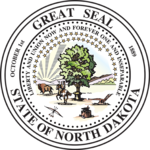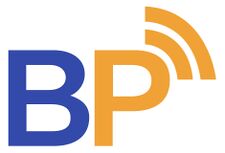Daniel Crothers
2005 - Present
2032
20
Daniel Crothers is a judge of the North Dakota Supreme Court. He assumed office in 2005. His current term ends on December 31, 2032.
Crothers ran for re-election for judge of the North Dakota Supreme Court. He won in the general election on November 8, 2022.
Crothers was appointed to the court in 2005 by Governor John Hoeven (R).[1][2][3] To read more about judicial selection in North Dakota, click here.
In 2020, Ballotpedia published Ballotpedia Courts: State Partisanship, a study examining the partisan affiliation of all state supreme court justices in the country. As part of this study, we assigned each justice a Confidence Score describing our confidence in the degree of partisanship exhibited by the justices' past partisan behavior, before they joined the court.[4] Crothers received a confidence score of Mild Republican.[5] Click here to read more about this study.
Biography
Crothers received his undergraduate degree from the University of North Dakota in 1979 and his J.D. from the University of North Dakota School of Law in 1982.[2] He was a law clerk in the New Mexico Court of Appeals from 1982 to 1983, and was an assistant state attorney for Walsh County, North Dakota, and assistant city attorney for Grafton, North Dakota from 1983 to 1984. Crothers then was an attorney in private practice from 1984 until he became a North Dakota Supreme Court Justice in 2005.[6] Crothers was also the president of the State Bar Association of North Dakota from 2001 to 2002.[2]
Elections
2022
See also: North Dakota Supreme Court elections, 2022
General election
General election for North Dakota Supreme Court
Incumbent Daniel Crothers won election in the general election for North Dakota Supreme Court on November 8, 2022.
Candidate | % | Votes | ||
| ✔ | Daniel Crothers (Nonpartisan) | 99.0 | 187,946 | |
| Other/Write-in votes | 1.0 | 1,843 | ||
| Total votes: 189,789 | ||||
| If you are a candidate and would like to tell readers and voters more about why they should vote for you, complete the Ballotpedia Candidate Connection Survey. | ||||
Do you want a spreadsheet of this type of data? Contact our sales team. | ||||
Nonpartisan primary election
Nonpartisan primary for North Dakota Supreme Court
Incumbent Daniel Crothers advanced from the primary for North Dakota Supreme Court on June 14, 2022.
Candidate | % | Votes | ||
| ✔ | Daniel Crothers (Nonpartisan) | 99.6 | 83,949 | |
| Other/Write-in votes | 0.4 | 324 | ||
| Total votes: 84,273 | ||||
| If you are a candidate and would like to tell readers and voters more about why they should vote for you, complete the Ballotpedia Candidate Connection Survey. | ||||
Do you want a spreadsheet of this type of data? Contact our sales team. | ||||
2012
- See also: North Dakota judicial elections, 2012
Crothers was re-elected to the supreme court with 99.15 percent of the vote after running unopposed on November 6, 2012.[7]
2008
Crothers ran unopposed on November 4, 2008 to an unexpired four-year term on the court.[8]
2005
Crothers was appointed to the North Dakota Supreme Court in 2005 by Governor John Hoeven (R).[1]
Campaign themes
2022
Ballotpedia survey responses
See also: Ballotpedia's Candidate Connection
Daniel Crothers did not complete Ballotpedia's 2022 Candidate Connection survey.
Analysis
Ballotpedia Courts: State Partisanship (2020)
Last updated: June 15, 2020
In 2020, Ballotpedia published Ballotpedia Courts: State Partisanship, a study examining the partisan affiliation of all state supreme court justices in the country as of June 15, 2020.
The study presented Confidence Scores that represented our confidence in each justice's degree of partisan affiliation. This was not a measure of where a justice fell on an ideological spectrum, but rather a measure of how much confidence we had that a justice was or had been affiliated with a political party. The scores were based on seven factors, including but not limited to party registration.[9]
The five resulting categories of Confidence Scores were:
- Strong Democrat
- Mild Democrat
- Indeterminate[10]
- Mild Republican
- Strong Republican
This justice's Confidence Score, as well as the factors contributing to that score, is presented below. The information below was current as of June 2020.
Daniel
Crothers
North Dakota
- Partisan Confidence Score:
Mild Republican - Judicial Selection Method:
Elected - Key Factors:
- Donated less than $2,000 to Republican candidates
- Appointed by a Republican governor
- State was a Republican trifecta at time of appointment
Partisan Profile
Details:
Crothers donated $1,400 to Republican candidates. He was appointed Gov. John Hoeven (R) while the state was a Republican trifecta.
Other Scores:
Bonica and Woodruff campaign finance scores (2012)
In October 2012, political science professors Adam Bonica and Michael Woodruff of Stanford University attempted to determine the partisan ideology of state supreme court justices. They created a scoring system in which a score above 0 indicated a more conservative-leaning ideology, while scores below 0 were more liberal.
Crothers received a campaign finance score of 1.51, indicating a conservative ideological leaning. This was more conservative than the average score of 1.00 that justices received in North Dakota.
The study was based on data from campaign contributions by the judges themselves, the partisan leaning of those who contributed to the judges' campaigns, or, in the absence of elections, the ideology of the appointing body (governor or legislature). This study was not a definitive label of a justice, but an academic summary of various relevant factors.[11]
State supreme court judicial selection in North Dakota
- See also: Judicial selection in North Dakota
The five justices of the North Dakota Supreme Court are chosen in nonpartisan elections. Judicial candidates compete in a primary election, and the top two candidates advance to the general election in November.[12] If a justice retires or dies in office, the governor may appoint a justice to the court for two years, when the appointed justice must then run in a nonpartisan election.[13]
Once elected, judges serve 10-year terms. At the expiration of a judge's term, he or she must run for re-election to remain on the court.[12]
Qualifications
To serve on this court, a judge must be:
- a U.S. and state citizen and
- a licensed attorney.[12]
Chief justice
The court's chief justice is chosen by a vote of the supreme and district court judges to serve a five-year term.[12]
Vacancies
In the event of a midterm vacancy, the governor appoints a replacement with help from a judicial nominating commission. Alternatively, the governor may call a special election to fill the vacancy. Appointed judges are to serve for at least two years, after which they must run in the general election to finish the remainder of the unexpired term.[14] If a justice retires or dies in office, the governor may appoint a justice to the court for two years, when the appointed justice must then run in a nonpartisan election.[15] The map below highlights how vacancies are filled in state supreme courts across the country.
See also
2022 Elections
External links
|
Officeholder North Dakota Supreme Court |
Footnotes
- ↑ 1.0 1.1 North Dakota Supreme Court, "Governor appoints Crothers to Supreme Court," archived November 28, 2015
- ↑ 2.0 2.1 2.2 North Dakota Supreme Court, "Daniel J. Crothers," archived January 14, 2016
- ↑ See Judicial selection in North Dakota
- ↑ We calculated confidence scores by collecting several data points such as party registration, donations, and previous political campaigns.
- ↑ The five possible confidence scores were: Strong Democrat, Mild Democrat, Indeterminate, Mild Republican, and Strong Republican.
- ↑ Project Vote Smart, "Justice Daniel J. Crothers," accessed June 25, 2021
- ↑ North Dakota Secretary of State, "Official Statewide General Election Results," updated April 8, 2021
- ↑ North Dakota Secretary of State, "November 2008 election results," archived October 15, 2016
- ↑ The seven factors were party registration, donations made to partisan candidates, donations made to political parties, donations received from political parties or bodies with clear political affiliation, participation in political campaigns, the partisanship of the body responsible for appointing the justice, and state trifecta status when the justice joined the court.
- ↑ An Indeterminate score indicates that there is either not enough information about the justice’s partisan affiliations or that our research found conflicting partisan affiliations.
- ↑ Stanford University, "State Supreme Court Ideology and 'New Style' Judicial Campaigns," October 31, 2012
- ↑ 12.0 12.1 12.2 12.3 National Center for State Courts, "Methods of Judicial Selection: North Dakota," accessed August 16, 2021
- ↑ State of North Dakota, "Supreme Court," accessed September 8, 2022
- ↑ National Center for State Courts, "Methods of Judicial Selection: North Dakota," accessed August 16, 2021
- ↑ State of North Dakota, "Supreme Court," accessed September 8, 2022
| ||||||||||
| |||
|---|---|---|---|
| Current |
| ||
| Former |
Mary Muehlen Maring • Gerald VandeWalle • Dale Sandstrom • Carol Ronning Kapsner • | ||
Federal courts:
Eighth Circuit Court of Appeals • U.S. District Court: District of North Dakota • U.S. Bankruptcy Court: District of North Dakota
State courts:
North Dakota Supreme Court • North Dakota Court of Appeals • North Dakota District Courts • North Dakota Municipal Courts
State resources:
Courts in North Dakota • North Dakota judicial elections • Judicial selection in North Dakota



